It is usually a romantic idea to think of a structure as a living thing that has thrived and suffered, and witnessed history as it occurred. We do, of course, know that they are inanimate structures of stone. And yet, there really are quite a few of those over the world. Monumental structures with a history to match their architectural majesty. As if to prove to us that life is indeed a romance, an adventure. One of such storied buildings is, perhaps unsurprisingly, in İstanbul. Introducing the magnificent icon of the old city: Hagia Sophia, or as it is known in Turkish today, Aya Sofya.
History of Hagia Sophia
What is the Hagia Sophia?
It has been a lot of things in fact. Started off as an Orthodox cathedral, during the Latin Empire period between 1204 to 1261 it became a Catholic cathedral instead. With the end of that state, Hagia Sophia was converted again into a house of worship for the Orthodox faith. But then, in 1453, Mehmed II, the sultan of the Ottoman Empire conquered the city and converted Hagia Sophia to a Sunni Islamic mosque.
Noticing a pattern yet? Because when in the early 20th century, Ottoman Empire was superseded by the secular Turkish Republic, Hagia Sophia was now converted into a museum. And it stayed so. Well… at least until July 2020, when Hagia Sophia was opened to prayers again as a mosque, but one that is also still kind of a museum during non-prayer hours.
What else was it? Well, for starters, it was the greatest cathedral in the world for almost a whole millennium, until Seville Cathedral superseded it in 1507.
I would venture to say that the monumental structure has had a storied, eventful existence. And if anything, it has always been a signal, an approval, of the shift in power. It bears the story of this land, of the city: a tapestry of many colors, many ages, peoples, cultures, and faiths. Of change, and persistence. Throughout empires, religions, wars, earthquakes, reconstructions, the monumental structure has stood. It has seen people of many origins praying in many tongues within its walls. Or just enjoying the interiors as a shelter from the sun, from the rain. It has seen Varangian Guard from north guarding the emperors of Byzantium. It has seen even street cats enjoying its shelter from elements, which were taken care of by the building’s caretakers, and very much adored by its many visitors!
When was it built?
First, in the mid 4th century, a church known simply by the name of “Great Church” stood there. Even then, it was apparently bigger than the other churches of the city to earn this name. But eventually, the patriarch became at odds with the empress and got exiled for his troubles. Which led to riots, which led to a fire, which led to the Great Church not being so great anymore… In fact, it mostly ceased to exist due to it.
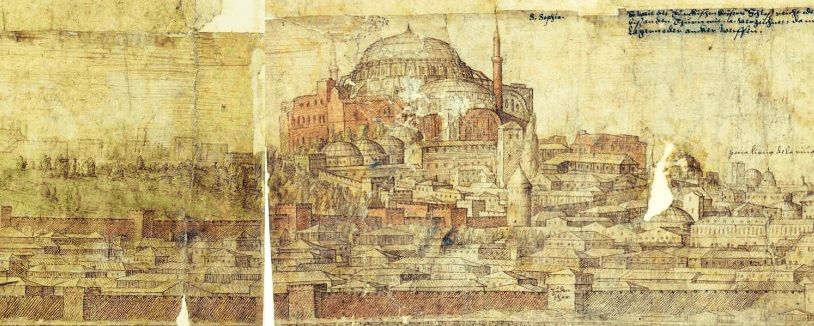
Well, of course, Byzantium remaining without its great church just would not do! Emperor Theodosius II ordered a new Great Church to be built at the spot. This new church was even greater in its splendor, and it stood proudly until the January of 532, when a set of events led popular disdain towards then emperor Justinian I to a climax. Which led to riots, and… yeah it ends with fire and the Great Church ceasing existence.
Justinian himself fared better than the structure, retained his power, and had tens of thousands of civilians executed for riots in the Hippodrome. Now that the revolts were taken care of, Justinian took the opportunity to restore the church to a glory greater than before. And restored it was, construction already begun the same year of the Hagia Sophia we know now in 532, and lasted until 537. Greatest cathedral in the world at the time, now twice risen from ashes, like the mythical phoenix. Becoming greater each time.
Why has it been important throughout the history of mankind?
Hagia Sophia has been a symbol of power for contemporary rulers through ages. But through their machinations, they have inadvertently made it a symbol of enduring despite change, and evolving into something newer with each violent shake.
Hagia Sophia has not only endured, but also evolved through ages. Aside from changing purposes or religions it served, it had to endure earthquakes, and changing needs. Thus, it is no surprise to see many great architects of their times have added touches to the icon of İstanbul, the Hagia Sophia. Architectural styles and innovations of multiple cultures were put into the edifice in renovations and reinforcements.
On the other side of the medallion, Hagia Sophia’s architectural style has strongly influenced Ottoman architecture after it too. İstanbul’s many majestic mosques following the city’s rule by Ottomans borrowed strongly from Hagia Sophia’s influence.
For almost a whole millennium, it was the central cathedral for Byzantine Christianity. For about half a millennium, it was the central Islamic mosque for the Ottomans. In addition, it was, and still is an architectural wonder both technically and visually.
Hagia Sophia Architecture: Making the Global Landmark Earn Its Place
The Dome of Hagia Sophia
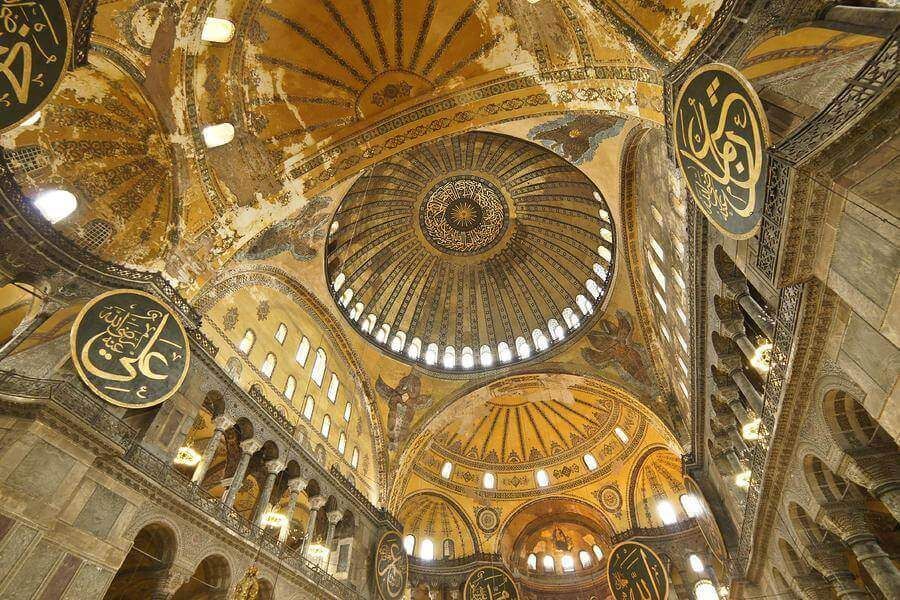
A wonder of its time, the dome was made possible by leveraging the mathematical understandings of the time. The dome is 33 meters in diameter, and at its highest point reaches 55.6 meters high from the floor.
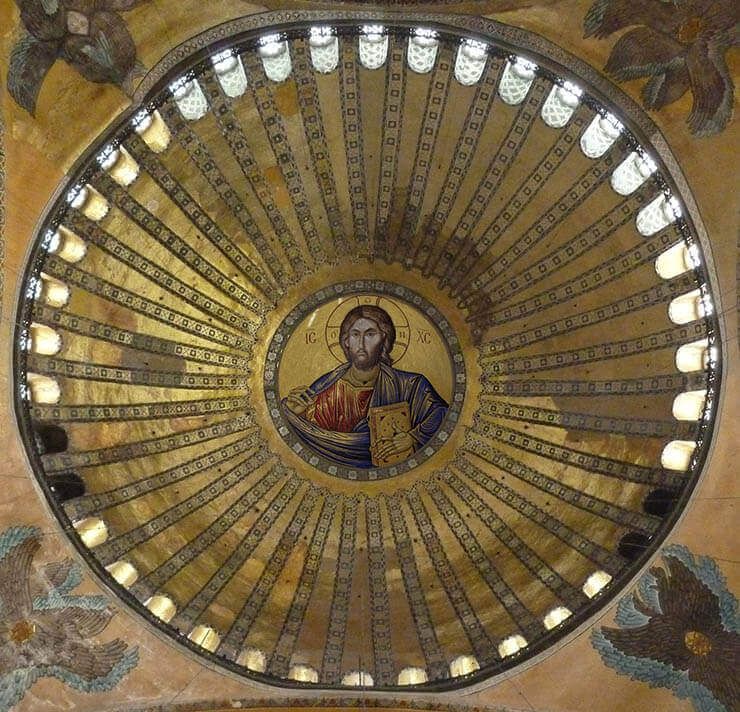
It was the largest dome of its kind at the time of construction, and remained so for a thousand years. The massive dome has been a challenge throughout Hagia Sophia’s existence, as earthquakes made it collapse while the architects of the time reconstructed and reinforced it each time.
As Fascinating as the Landmark Itself: Hagia Sophia Interiors
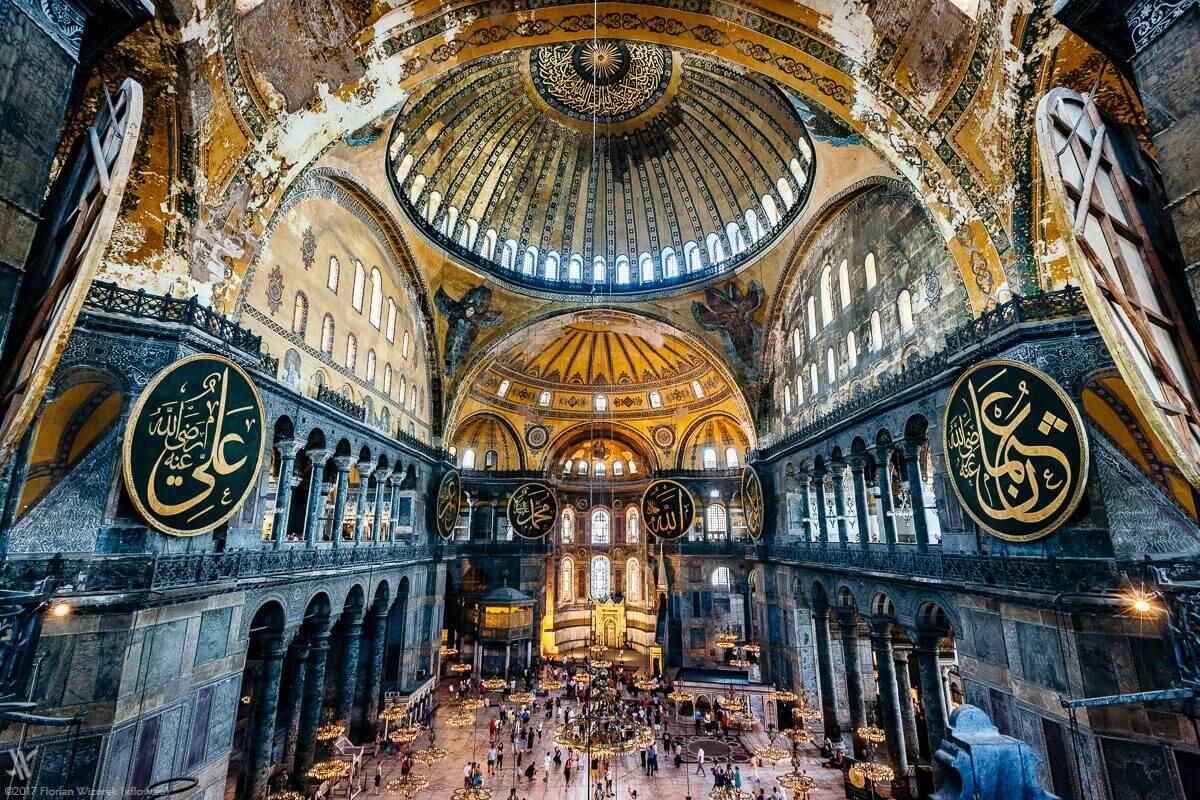
While the exterior of Hagia Sophia is majestic, the interior is at least as rich in splendor. Most famous are the Byzantine mosaics and frescoes of Cristian imagery. The striking mosaics, despite reactivation as a mosque, will not be covered over. Instead, they will be hidden during prayer hours, but will be preserved and visible during visiting hours.
Of course, the centuries as a mosque meant that the interior is also adorned in Islamic art style too, and many examples of geometric patterns and calligraphy are visible within.
The Spiritual Elements Within
Its history as a focal point for many religions is already obvious. Whatever historical empire had Hagia Sophia under its control, had the edifice as their religious center and symbol.
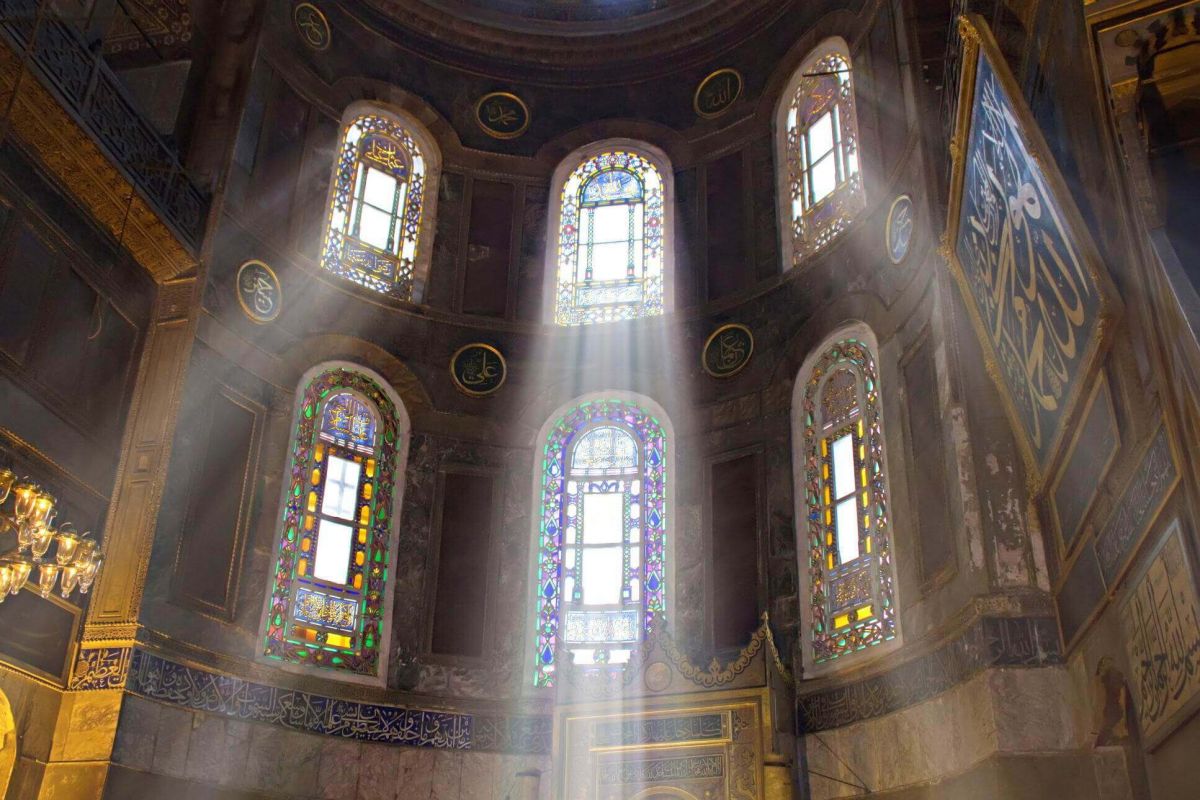
Although, perhaps as touchingly, Hagia Sophia shows us that certain creations of humanity can go beyond their differences, and endure, be appreciated by all. In the end, all the different periods and purposes served by the building resulted in something added to it.
It is almost a 1500 years old monument of standing tall after all, adapting, accommodating, and cosmopolitanism. It harbored beings under its dome of all walks of life, and faiths. Emperors, sultans, Christians, Muslims, emperor’s Varangian guards, and even cats! Especially famous was Gli, the “Hagia Sophia Cat”. She rose to fame due to living her whole life within Hagia Sophia, and even getting patted on the head by dignitaries like Barack Obama and Recep Tayyip Erdoğan. Unfortunately, despite receiving veterinarian care for months, she passed away in late 2020, at the ripe age of 16. But Hagia Sophia is still open to all the cats, including Gli’s kittens!
Hagia Sophia Today
Hagia Sophia’s reopening as a mosque has definitely made some noise and controversy. The building still seems to pull all the political chords even today. Since it is a mosque now, there a few etiquette rules to follow before, such as wearing a headscarf for ladies, and not wearing revealing clothes into the building in general. Also, the building is open to visit during non-prayer hours.
How to get to Hagia Sophia?
Bağcılar-Kabataş Tram Line is a good way to get to Sultanahmet where Hagia Sophia is. The Tram line is accessible through other public transportation.
While you are there, be sure to also experience other historical wonders in the same area like Topkapı Palace, Basilica Cistern, Hagia Irene, or check out the local cuisine in Sultanahmet restaurants!

